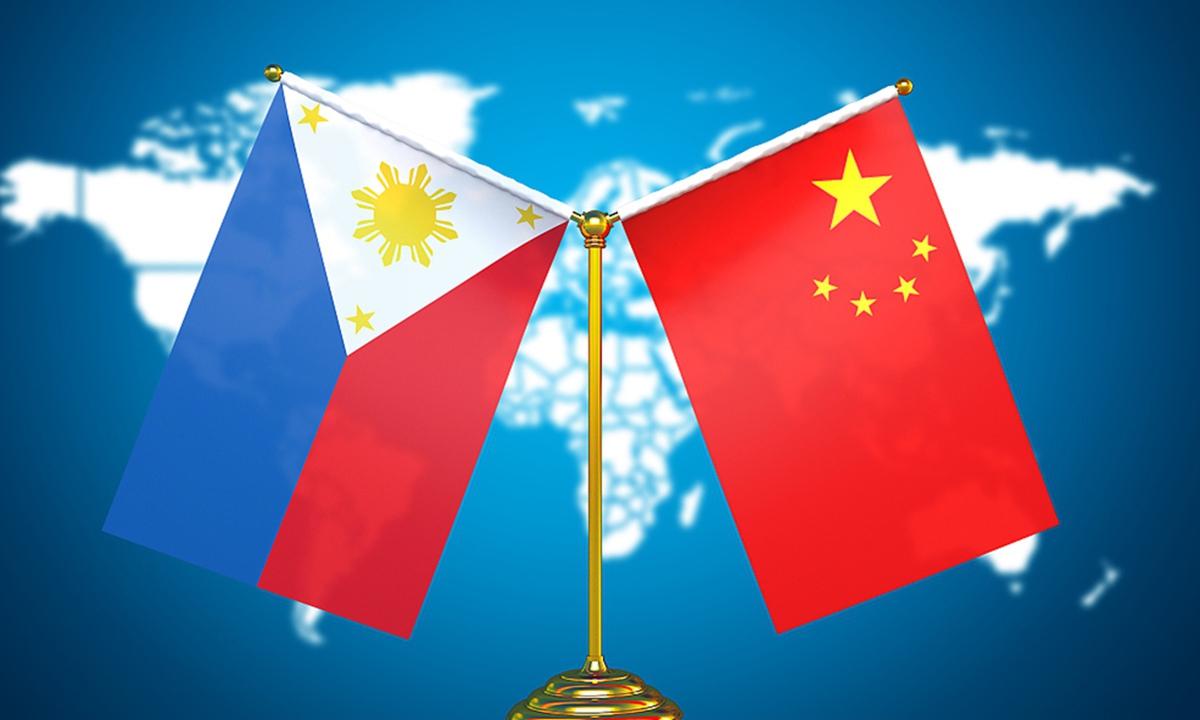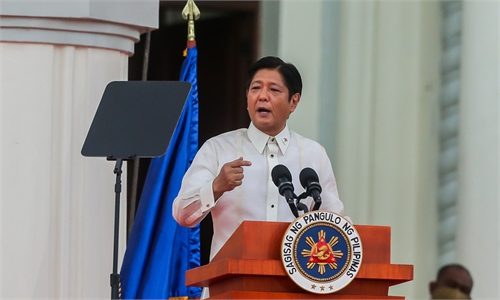GT Voice: Need for China-Philippines cooperation overwhelming despite external noise

File photo
Philippine President Ferdinand Romualdez Marcos Jr. is set to pay a state visit to China from Tuesday through Thursday. The visit itself shows that the two countries are working toward cooperation and communication, which will be the main theme of bilateral relations. Although some Western media outlets have tried to play up the so-called maritime disputes before Marcos' visit, excessive hype of the South China Sea disputes will not hinder the overall cooperation between China and the Philippines. A Bloomberg report claimed recently that "China was reclaiming land" around the Nansha Islands, which the Chinese Ministry of Foreign Affairs said was "completely untrue." Refraining from taking action on the presently uninhabited islands and reefs of the Nansha Islands is a serious common understanding reached by China and ASEAN members in the Declaration on the Conduct of Parties in the South China Sea (DOC), and China always strictly abides by it, Chinese Foreign Ministry spokesperson Mao Ning said.Some Western media outlets and politicians have been trying to create tensions in the region over the years, but under the joint efforts of regional countries, the South China Sea situation has maintained overall stability. The fact that China-Philippine relationship of comprehensive strategic cooperation has made significant progresses in various fields indicates that the South China Sea issue is not the mainstream of China-Philippine relationship and will not restrain or hinder bilateral cooperation.
China and the Philippines have broad prospects for cooperation in infrastructure construction, agricultural modernization, human resources, tourism and new-energy development. China is the Philippines' largest trading partner, largest source of imports and second-largest export market. In the first 11 months of 2022, bilateral trade between China and the Philippines topped $80.4 billion, up 8.3 percent year-on-year, according to Chinese customs data.
In the past several years, China and the Philippines have joined hands to deepen the construction of the China-proposed Belt and Road Initiative (BRI) and the Philippine "Build, Build, Build" (BBB) Program, and have carried out nearly 40 intergovernmental cooperation projects. China's investment in the Philippines hit a record high. The contracted investment in the Philippines from 2016 to 2021 amounted to 161 billion pesos ($2.73 billion), an increase of nearly three times over the previous six years. Looking forward, China and the Philippines have great potential for cooperation in infrastructure fields such as transportation, energy, and digital economy.
It is undeniable that there may still be conflict of interests between the two countries in some areas, such as fishing, but the need for cooperation between the two sides turns out to be overwhelming. What the two countries need to do is to disregard external interference and work toward cooperation to expand the common interests as much as possible, which will further enhance mutual trust between the two countries and dilute as many disputes as possible.
It will be the first visit of Marcos to China as president and his first official visit to a country outside the ASEAN, showing that the two countries highly value the bilateral relationship. China looks forward to working with the Philippines to make this visit an opportunity to carry forward friendship, deepen mutual trust, and usher the friendly ties in a new golden era, Chinese Foreign Ministry spokesperson Wang Wenbin told a daily media briefing on Friday when asked for details of the visit.
The history of friendly exchanges between China and the Philippines shows that China is a good neighbor and partner of the Philippines for economic development. Staying committed to making the cooperation pie bigger is in the best interests of both sides.


